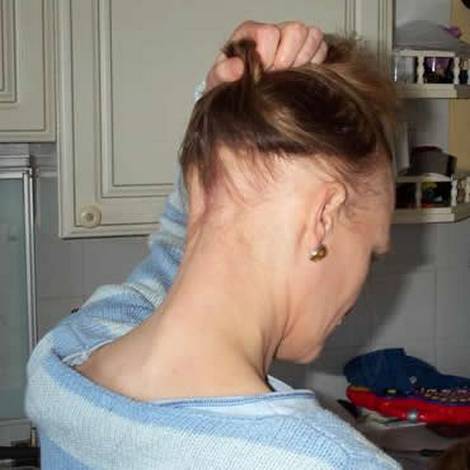Understanding Alopecia (Part II)
Some of our readers have been asking if alopecia could be a sign of some deeply-rooted pathology inside the body and whether it is associated with any health complications. In some cases, hair loss indeed can be a signal that something is going wrong on a deeper physiological level – several examples are malnutrition that may cause vitamin or mineral deficiencies, thyroid disorders, or heavy metal poisoning. Anxiety, depression and severe stress can also trigger baldness, as well as serious internal diseases. However, in most cases, hair loss is an isolated condition that is related to ageing, hormonal imbalances, or genetics. In its own turn, alopecia can produce symptoms of stress, depression, social anxiety, or other psychological illnesses. If any of these conditions are affecting you, a good solution would be to see your health-care provider to get a correct diagnosis and proper treatment.
Another good question asked by our readers is whether hair loss can be prevented. In fact, if you have inherited the so-called “baldness gene”, there is little you can do to prevent hair loss. However, if your hair is thinning due to other factors, such as stress, environmental pollution, lack of nutrients, or improper hair care, alopecia can be prevented by correcting your lifestyle, diet, or hair-styling habits.
Alopecia areata is the most mysterious of all hair loss conditions. It is now believed to be an autoimmune disease, which may be caused by genetics, viruses, bacteria, drugs, or even environmental pollution. Some people suffering from this condition can be at a higher risk of contracting vitiligo (a skin disease), thyroid disorders, or anaemia.
Alopecia areata usually starts with an oval or round patch of baldness that suddenly appears on the scalp. The disease tends to develop quickly, producing more bald patches and spreading onto other scalp areas. In some cases, it can be accompanied by mild inflammation and itchiness on the affected areas. As alopecia areata progresses, it can also affect body hair, including eyelashes, pubic hair, and beard. In the most severe cases, individuals with alopecia areata can lose all scalp and body hair and develop a condition known as alopecia universalis. One in five people with alopecia areata also develops nail deformities. The disease is often accompanied by symptoms of anxiety and depression.
Alopecia areata is a sign of a malfunctioning immune system, when lymphocytes attack healthy cells of their own organism mistakenly identifying them as foreign invaders. In case of alopecia areata, the immune cells start a war against the hair follicles, producing inflammation and a massive fall of hair that results in bald patches. Researchers still do not know why the immune cells of the affected individuals only attack their hair follicles, but not other tissues of the body.
Good news is that alopecia areata is a reversible condition, since the hair follicles are not completely annihilated but still capable of regenerating.
In our next article, we are going to concentrate on current treatment options available for alopecia areata.
Richard Dunn
Posted on July 25, 2008
Filed Under Hair Loss, Hair Loss Conditions
Comments
Leave a Reply

